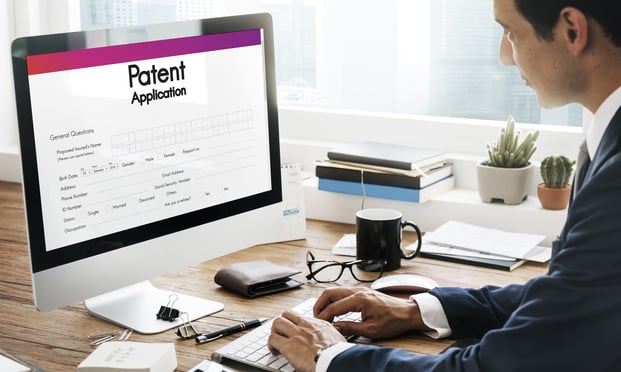Features

Patent Strategy Tips from Fed. Circ. 'Kroy v. Groupon' Ruling on Collateral Estoppel
The U.S. Court of Appeals for the Federal Circuit recently addressed the usage of the doctrine of collateral estoppel in patent infringement cases. Specifically, the court considered whether a finding of invalidity of claims by the PTAB at an inter partes review could be used to estop a patent holder from asserting patent infringement of different claims of the same patent in district court litigation.
Features

Post-Amgen Patent Playbook: Section 112 Under the Microscope
The Supreme Court’s unanimous 2023 decision in Amgen v. Sanofi reshaped enablement analysis for broad genus patent claims. In the wake of Amgen, broad functional claims have been scrutinized rigorously for sufficient disclosure. This article summarizes key post-Amgen decisions, which illustrate how patent drafters and litigators must navigate the fine line between claim breadth and disclosure depth in the post-Amgen era.
Features

ChatGPT’s Ghibli-Style Images Are Testing Copyright Law
Last month, a flood of whimsical, dreamlike portraits in the style of Studio Ghibli (the Japanese animation studio) swept across social media. What began as a playful social trend quickly raised legal concerns. Within days, users began reporting that OpenAI had restricted prompts referencing specific artistic styles. This trend offers a live case study of how generative AI may implicate core doctrines of copyright law, including derivative works, substantial similarity, and fair use.
Columns & Departments

IP News
Federal Circuit Examines Written Description Requirements for U.S. Patent Application Publications Used as Prior Art Under Pre-AIAFederal Circuit Denies Preliminary Injunction In a Biologics Price Competition and Innovation Act Case
Features

D.C. Circuit Court Rules That Artificial Intelligence Cannot Solely Author Copyrightable Works
The D.C. Circuit affirmed that AI cannot be the sole author on a copyright-registered work, but left questions about the future of AI authorship in copyright for Congress to resolve.
Features

Writing Strong Antibody Claims: Avoiding or Addressing USPTO Rejections for Written Description and Enablement
Many patent applicants currently face difficulty in obtaining antibody claims because of written description and enablement rejections under 35 U.S.C. §112(a). The USPTO routinely rejects claims as too broad, arguing that such claims cover more antibodies than the specification discloses, or that undue experimentation would be needed to determine whether an antibody reads on the claims. These heightened disclosure requirements increase laboratory costs to generate sufficient data for a §112(a)-proof specification.
Features

Reframing the AI Debate Will Improve How We Practice Law
For the last several years, I’ve become obsessed with a particular legal, technological, and philosophical question: Can a robot invent on its own?
Features

New Bifurcated PTAB Pretrial Procedure: Procedural Deep Dive and Possible Implications
In the latest action part of a recent whirlwind of PTAB policy and procedural change around the use of so-called “discretionary denial” to refuse to a challenge to the validity of a granted patent, the Acting Director of the USPTO has issued a memorandum creating a new “bifurcated” pretrial procedure to be used for deciding whether or not to proceed with a trial in response to a petition for inter partes review or post grant review of a granted patent.
Features

The AI Litigation Battleground: Existing IP Legal Frameworks Create Uncertain Environment
As artificial intelligence continues to drive innovation at an unprecedented pace, it has also become a battleground for litigation, particularly concerning intellectual property misappropriation, data scraping and model transparency.
Features

Bonus Content: How Emerging Technologies Are Impacting IP: A Chat With Legalweek Speaker Ryan Phelan
A Q&A with conference speaker Ryan Phelan, a partner at Marshall, Gerstein & Borun and founder and moderator of legal blog PatentNext, to discuss how courts and jurisdictions are handling novel technologies, the copyrightability of AI-assisted art, and more.
Need Help?
- Prefer an IP authenticated environment? Request a transition or call 800-756-8993.
- Need other assistance? email Customer Service or call 1-877-256-2472.
MOST POPULAR STORIES
- The Article 8 Opt InThe Article 8 opt-in election adds an additional layer of complexity to the already labyrinthine rules governing perfection of security interests under the UCC. A lender that is unaware of the nuances created by the opt in (may find its security interest vulnerable to being primed by another party that has taken steps to perfect in a superior manner under the circumstances.Read More ›
- Strategy vs. Tactics: Two Sides of a Difficult CoinWith each successive large-scale cyber attack, it is slowly becoming clear that ransomware attacks are targeting the critical infrastructure of the most powerful country on the planet. Understanding the strategy, and tactics of our opponents, as well as the strategy and the tactics we implement as a response are vital to victory.Read More ›
- Clause & EffectNet-Profit Rights/Movies Based on TV Shows<br>Insurance/Contract-Breach Exclusion<br>Insurance/Copyright-Infringement CoverageRead More ›
- Rights and Obligations In Patent LicensesThe owner of a commercially successful patent may have competing desires. On one hand, the patent owner wants to protect the patent and secure its maximum benefit; on the other hand, the patent owner wants to avoid enforcement litigation with competitors because it is expensive and puts the patent at risk.Read More ›
- Foreseeability as a Bar to Proof of Patent InfringementThe doctrine of equivalents is a rule of equity adopted more than 150 years ago by the U.S. Supreme Court. Prosecution history estoppel is a rule of equity that controls access to the doctrine. In May 2002, the Court was called upon to revisit the doctrine and the estoppel rule in <i>Festo Corp. v. Shoketsu Kinzoku Kogyo Kabushiki Co. Ltd.</i> Ultimately the Court reaffirmed the doctrine and expanded the estoppel rule, but not without inciting heated debate over the Court's rationale — especially since it included a new and controversial foreseeability test in its analysis for estoppel.Read More ›
